Premium Only Content
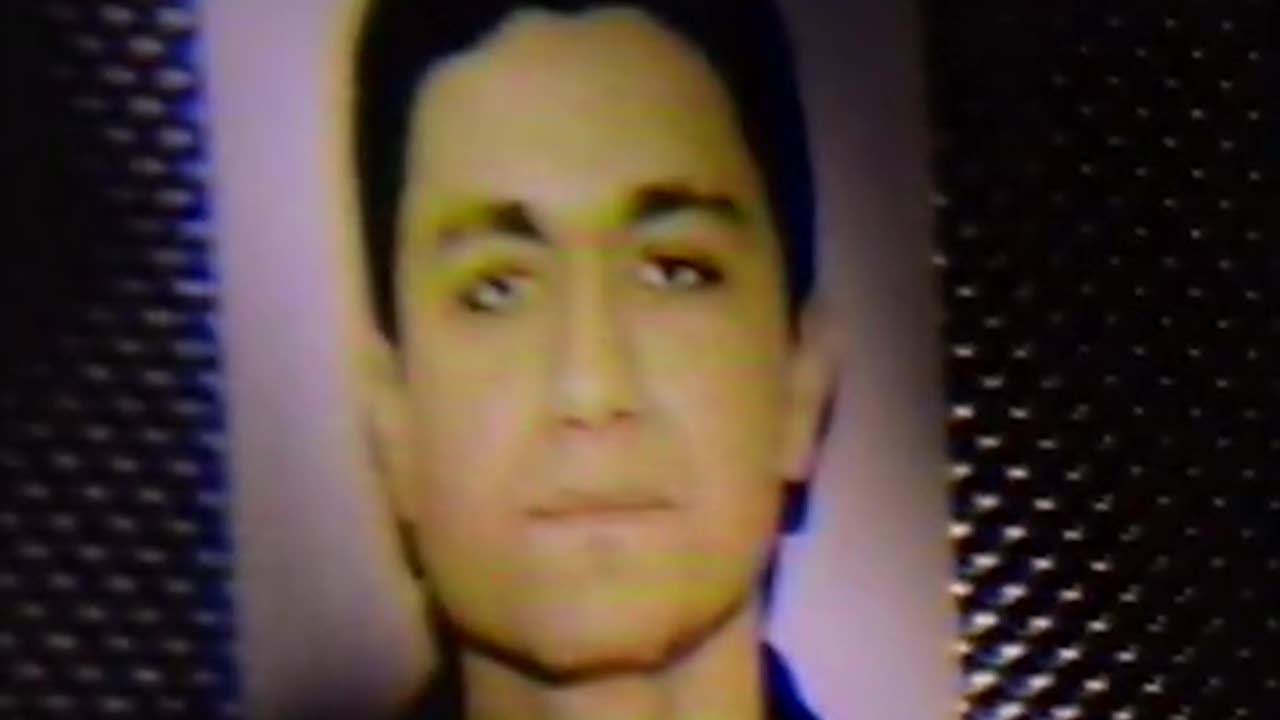
Part Two: 9/11 False Flags: The Secret History of Al Qaeda
TRANSCRIPT
"The terrorist and the policeman both come from the same basket. Revolution, legality—counter-moves in the same game; forms of idleness at bottom identical."
Joseph Conrad
INTRODUCTION
Alexandria, Egypt. July 23, 1954.
It's Revolution Day in Egypt and the streets of Alexandria are teeming with revelers. Two men—Victor Levy and Philip Natanson—pick their way through the crowd on their way to the cinema quarter, each nervously clutching a device in their pocket. Eyeing the fire trucks parked at the intersections, Philip leans over to Victor and whispers: "They're expecting us."
They reach the steps of the Rio Cinema just as the audience from the afternoon showing begin pouring out of the entrance. They fight their way through the stream of people and into the foyer and immediately see a man in the usual garb of an Egyptian plainclothes detective waiting for them. Philip turns to run away but instantly a wave of heat begins to sear his thigh. He tries to tell Victor to run, but no words come out. Instead, a white hot flame leaps from his trousers. He squeezes his thigh with all his strength in a vain attempt to stop the flame before the bomb can ignite—but it's too late.
There's an explosion.
Philip lies on the ground, his arms and legs burnt black from the bomb. Victor is nowhere to be seen. Soon, a police sergeant arrives, along with the plainclothes detective. Someone in the crowd shouts, "Take care! He may have another bomb!" But the sergeant moves in all the same. "Don't worry. We were waiting for them."
The police had been expecting them. Victor and Philip were Egyptian Jews, members of a sleeper cell established by Israeli military intelligence in 1951.
The Israelis had watched in dismay as the military coup in Egypt in 1952 led to the rise of Gamel Abdel Nasser, who was not only hostile to Israel, but who, as a perceived anti-communist, was securing military and financial aid from the Americans and even the British. With Britain already staging talks to withdraw from their Suez military base, Israel decided to act. In 1954, they activated their military intelligence sleeper cell in the country for an audacious mission. Codenamed Operation Susannah, their plan was to stage an increasingly spectacular series of bombings in Cairo and Alexandria.
The first bombing—an explosion at the Alexandria central post office on July 2nd—had gone off without a hitch. The second, a simultaneous attack on the American Libraries in Cairo and Alexandria, was similarly successful. It was their third attack—an ambitious attempt to bomb two cinemas in Cairo, two in Alexandria and the Cairo railway station—that failed, derailing the operation. Ten members of the cell were rounded up. Of the ten, two committed suicide in the course of their interrogations by the Egyptian police, two more were executed, and six were sentenced to prison, eventually making their way to Israel after their release.
After decades of internal Israeli investigations, finger-pointing, political scandal and high-profile resignations, the full truth of Operation Susannah remains shrouded in official secrecy. The Israeli government did not even formally acknowledge the incident until 2005, a full half-century after the affair, when nine of the agents were officially commended for their service.
But the reasoning behind the operation was revealed during one of the commissions of inquiry that was established to examine the affair. According to one officer who was given oral instructions directly from Israel's Military Intelligence chief, Binyamin Gibli:
[Our goal is] to break the West's confidence in the existing [Egyptian] regime . . . . The actions should cause arrests, demonstrations, and expressions of revenge. The Israeli origin should be totally covered while attention should be shifted to any other possible factor. The purpose is to prevent economic and military aid from the West to Egypt.
In short, the Israelis had attempted a false flag operation, hoping to blame their own spectacular acts of violence on the Muslim Brotherhood or the communists in order to destabilize Nasser's government, undermine Western confidence in its Egyptian ally, and persuade the British military to remain at their Suez base.
The operation was a failure in every sense. The cell was discovered and its members imprisoned. Their actions did not destabilize the Nasser government, nor did they influence the relationship between Egypt and the West. And the British did leave their base in 1956, after an abortive Israeli/British/French invasion of the region was brought to an end by the US and the Soviets. But it did implant an idea in the minds of the Western military planners: that acts of terrorism could be staged and blamed on Muslim scapegoats to further their own political goals.
As we shall see, it was not long before America's military brass were forwarding their own operational plans making use of this tactic . . . plans that would culminate in the most spectacular terrorist attack the world had yet seen.
Part Two: 9/11
Tuesday, September 11, 2001, dawned temperate and nearly cloudless in the eastern United States.
EARLY SHOW: Miles and miles of sunshine. Miles Davis. Going to put Miles out there today. Nice as it could be across the Northeast. Rough seas still from the chop from that hurricane, but other than that it’s kind of quiet around the country. We like quiet. It’s quiet. It’s too quiet.
SOURCE: September 11, 2001 - 8:31am EDT on WUSA - The Early Show
In a matter of moments, however, the quiet of that Tuesday morning transformed into the turbulence of 9/11, and the world seemed to turn upside down. As the events of that day played out like a Hollywood movie on TV screens around the world, the meaning of those events was still far from clear. Who was behind this attack? Why were they attacking? What did the perpetrators hope to gain from it?
And yet it was there, in the initial hours of those chaotic events—years before the congressional inquiries and presidential commissions presumed to answer those questions—that all of the essential pieces of the official story of 9/11 were laid out on the tv screens of the American public.
8:50 AM
DIANE SAWYER: We want to tell you what we know as we know it, but we just got a report in that there's been some sort of explosion at the World Trade Center in New York City. One report said—and we can't confirm any of this—that a plane may have hit one of the two towers of the World Trade Center, but again you're seeing the live pictures here.
SOURCE: September 11, 2001 - 8:50am EDT on WJLA - ABC News Good Morning America
9:03 AM
JON SCOTT: There was a pilot who flew— There was another one! We just saw— We just saw another one. We just saw another one apparently go— Another plane just flew into the second tower. This raises— This has to be deliberate, folks.
CORRESPONDENT: Well, that would begin to say that, yeah.
SCOTT: We just saw on live television as a second plane flew into the second tower of the World Trade Center. Now, given what has been going on around the world, some of the key suspects come to mind: Osama bin Laden. Who knows what?
SOURCE: Original News Broadcast on 9/11/01
11:51 AM
MARK WALSH: I was watching with my roommate—it was approximately several minutes after the first plane had hit. I saw this plane come out of nowhere and just ream right into the side of the Twin Tower, exploding through the other side. And then I witnessed both towers collapse, one first and then the second, mostly due to structural failure because the fire was just too intense.
SOURCE: FOX News 9-11-2001 Live Coverage 8:46 A.M E.T - 5:00 P.M E.T
11:54 AM
JERROLD POST: I am sure the highest degree of probability associated with this attack, which had remarkable coordination and logistical sophistication, would be Osama bin Laden's Al Qaeda group.
SOURCE: September 11, 2001 - 11:54am EDT on WTTG
5:54 PM
KATIE COURIC: One senior US intelligence official says now that the US is 90% certain that bin Laden was responsible for today's attack.
SOURCE: September 11, 2001 - 5:54pm EDT on WRC - News 4 at 5
8:22 PM
PETER JENNINGS: He—an engineer and an architect—speculates here that the heat above the crash site on the twin trade towers may have indeed caused the building above to melt, just simply collapsing in itself and putting enormous weight on the rest of the building below, which could not possibly stand it. Now the steel columns which go up through the building, built to code at best, would only be able, he believes, to have been able to stand an hour or an hour and a half of intense fire like this, pressing down on the rest of the building until it finally was able to give way.
SOURCE: September 11, 2001 - 8:22pm EDT on WJLA
Remarkably, these initial, off-the-cuff speculations turned out to be—according to the various inquiries and investigations that followed—accurate in all their main respects. Osama bin Laden, the mastermind of the Al Qaeda terrorist organization, had planned and directed this attack. The Twin Towers had collapsed due to structural failure, because the fire was just too intense.
These assertions, drilled into the minds of a susceptible audience still reeling in shock from the horror of the events they had just witnessed, became the core tenets of what would become enshrined in the final report of the 9/11 Commission as the "official story" of 9/11.
In this official story, Osama bin Laden, once the "anti-Soviet warrior on the road to peace," was now an international terror kingpin. Radicalized by the arrival of US military forces in the Arabian peninsula in the Gulf War, he issued a fatwa against the United States and began a series of strikes on US targets; first bombing the US embassies in Tanzania and Kenya in 1998, and then bombing the USS Cole while it was harbored in Aden in October of 2000.
According to this version of events, the 9/11 plot was hatched by Khalid Sheikh Mohammed, a "highly educated" Pakistani militant who presented the "planes operation"—as the 9/11 Commission asserts it was originally known—to Osama bin Laden and his chief of operations, Mohammed Atef, in 1996. It was bin Laden, we are told, who greenlighted the operation "sometime in late 1998 or early 1999." The three of them developed a list of buildings to be targeted—the White House, the U.S. Capitol, the Pentagon, and the World Trade Center—and bin Laden himself handpicked the men he wanted to carry out the operation.
Carefully moving their operatives into place over the course of the next two years, this crack terror squad—devoted Muslim radicals willing to die for their beliefs—succeeded through a combination of skill and the colossal failure of the American intelligence complex, hindered by bureaucracy and hampered by a lack of political will to recognize the growing threat of Islamic terror.
No individual was to blame for this "failure," the official story of 9/11 concludes, but the remedy to the problems presented by the 9/11 attack was obvious: to erect a new homeland security complex, tear down the walls between foreign intelligence and domestic policing, implement warrantless surveillance and other legally dubious means of disrupting potential terror threats on the home front, and launch a war on terror abroad to bring the battle to the terrorists.
But this narrative, now enshrined as the official history of 9/11—that the 9/11 plot was hatched by Khalid Sheikh Mohammed in 1996, that it was directed by terrorist mastermind Osama bin Laden and that it was executed by Al Qaeda so flawlessly that the intelligence agencies could not have even envisioned it, let alone prevented it—
GEORGE W. BUSH: Nobody in our government, at least—and I don't think the prior government—could envision flying airplanes into buildings.
SOURCE: The President's News Conference - April 13, 2004
—is now contested in every respect, even by defenders of that official history.
As even mainstream authors like Jason Burke were forced to admit, the popular conception of Al Qaeda—that of a top-down organization with a single leader overseeing its operations—was a convenient fiction, created by the FBI so they could prosecute bin Laden in absentia for the 1998 bombings of two US embassies in East Africa. In order to prosecute bin Laden, they had to show that Al Qaeda "coordinates the activities of its global membership" and that bin Laden, as the leader of the group, bears the responsibility for any actions attributed to the organization.
JASON BURKE: The idea, which is critical to the FBI's prosecution—that bin Laden ran a coherent organization with operatives and cells all around the world, of which you could be a member—is a myth. There is no Al Qaeda organization. There is no international network with a leader, with carders who will unquestionably obey orders, with tentacles that stretch out to sleeper cells in America, in Africa, in Europe. That idea of a coherent structured terrorist network with an organized capability simply does not exist.
SOURCE: The Power Of Nightmares: Part 3 The Shadows In The Cave (2004)
Even the 9/11 Commission's final report had to admit that Al Qaeda was less of a mafia-like organization with a capo served by his faithful lieutenants and more of a funding organization for "terrorist entrepreneurs." "Al Qaeda's worldwide terrorist operations," the report conceded, "relied heavily on the ideas and work of enterprising and strong-willed field commanders who enjoyed considerable autonomy."
As we saw in Part 1 of this exploration, Origin Story, these "terrorist entrepreneurs" included among their ranks renowned international Islamic radicals—like "The Blind Sheikh," Omar Abdel Rahman—and lesser-known but incredibly prolific terror cell leaders—like Ali Mohamed—whose remarkable abilities to evade State Department watch lists and foment and direct spectacular terror attacks directly under the nose of the intelligence agencies defies explanation . . . unless one assumes, as their closest associates did, that they were working under the purview of those intelligence agencies.
In order to better understand this aspect of the story, we have to return to 1990, the year that the specter of Islamic terror appeared on the shores of the United States.
Abdullah Azzam—Osama bin Laden's mentor and co-founder with bin Laden of the Maktab al-Khidamat (MAK), or the "Office of Services," which provided funding, training and an international support network to the "Afghan Arabs" during the Soviet-Afghan war—is dead, killed in a car bombing in Peshawar, Pakistan. It is never determined who committed the assassination, but Azzam's death resolves a dispute about the future of the jihad movement. Azzam had favoured continuing the fight in Afghanistan, pressing for the formation of an Islamic regime in Kabul. Bin Laden had other ideas; and now, as the undisputed leader of the old MAK network, he is free to pursue those ideas under the "Al Qaeda" banner.
But "Al Qaeda," at this point, barely even exists as a propaganda construct. Despite grandiose visions of creating "a unified global jihad movement," the withdrawal of the Soviets from Afghanistan and the end of the war leaves the group's future in doubt. Bin Laden returns to Saudi Arabia, looking for ways to leverage his family's wealth and power to make a name for himself in the Muslim world.
Meanwhile, in New York, the era of "Islamic terror" in the United States is about to begin.
Manhattan, New York. November 5, 1990.
Meir Kahane—an Orthodox Jewish rabbi and a convicted terrorist whose anti-Arab views were considered so extreme he was banned from the Israeli Knesset—has just finished delivering a speech in the Morgan D Room of the New York Marriott East Side Hotel. Leaving the podium, Kahane has begun mingling with the crowd. Suddenly one man, Sayyid Nosair, draws a .357 Magnum and fires, hitting Kahane twice, once in the neck.
Nosair flees, shooting one of Kahane's supporters in the leg in his rush out the door. His accomplice, Mahmud Abouhalima, is supposed to be waiting at the front door in a taxi to drive him away, but the doorman had waved Abouhalima away moments earlier, so Nosair jumps in the wrong cab by mistake. When he realizes his error, he brandishes the .357, ordering the cabbie to start driving. Instead, the driver scrambles out of the taxi and runs away.
Nosair is forced to flee on foot, racing down Lexington Avenue with his gun still in hand. Carlos Acosta, a US postal inspector, tries to stop him, drawing his weapon, but it's too late; Nosair fires first, hitting Acosta in the shoulder. Undeterred, Acosta drops to his knee, steadies himself and shoots back, hitting Nosair in the neck. Both Nosair and Kahane are rushed to Bellevue Hospital's trauma unit. Nosair survives his emergency operation. Kahane does not.
The dramatic events of that November night would culminate in an even more surprising verdict 13 months later. Not only was Nosair treated as a "lone gunman" acting of his own accord, but he was not even convicted of Kahane's murder. Despite such a brazen assassination—perpetrated in a crowded room and followed by a spectacular chase—Nosair was acquitted of murder, convicted instead on four lesser counts, including gun possession, assault and coercion. He was sentenced to just 22 years.
So, what went wrong? The jurors contend that they had "reasonable doubt" of Nosair's guilt because "the prosecution did not offer a witness during the five-week trial who saw the defendant fire the fatal shots" and—since Kahane's family had opposed an autopsy—the fatal bullet could not be matched to Nosair's weapon. But, in reality, the fix was in from the start. As even the Congressional Joint Inquiry into the 9/11 attacks conceded in a staff statement a decade after the trial:
According to FBI officials who were interviewed, the NYPD and the District Attorney’s office resisted attempts to label the Kahane assassination a 'conspiracy' despite the apparent links to a broader network of radicals. Instead, these organizations reportedly wanted the appearance of speedy justice and a quick resolution to a volatile situation. By arresting Nosair, they felt they had accomplished both.
The typically bureaucratic wording of the statement obscures the reality: the NYPD and the District Attorney's office didn't just passively resist the attempts to "label" the assassination a "conspiracy"; they deliberately covered up vitally important information that would have unwound that conspiracy and undermined the next decade of spectacular Al Qaeda terrorism.
Immediately after his arrest, forty-seven boxes of material were seized from Nosair's house in New Jersey. Among those materials were Top Secret training manuals from Fort Bragg and Secret communiqués from the US Joint Chiefs of Staff. Lest there be any doubt where the materials came from, they even discovered a video of Ali Mohammed's lectures at the Kennedy Special Warfare Center at Fort Bragg. But those weren't the only pieces of evidence that connected the Kahane assassination conspiracy—now commonly portrayed as the first act of Islamic terrorism on US soil—to Ali Mohammed, the remarkable CIA asset, US Army officer and FBI informant who, we are told, was "Al Qaeda's" strangely untouchable "triple agent" in the heart of the American intelligence establishment.
El Sayyid Nosair himself—the 34-year old Egyptian-born janitor with a penchant for Prozac who quite literally got away with murder—was, as it turns out, not unknown to the authorities. In fact, he had been known to the FBI since at least the previous summer. That's when, as it was later admitted, Nosair and a ragtag bunch of associates had been surveilled loading up a convoy of vehicles with semi-automatic weapons and copious amounts of ammo and heading to the Calverton Shooting Range on Long Island.
For four consecutive Sundays in July of 1989, the FBI's elite Special Operations Group—apparently tipped off that "PLO terrorists were threatening to blow up casinos in Atlantic City"—followed Nosair's convoy to the shooting range, snapping dozens of photographs of the group engaging in target practice with handguns, rifles and even an AK-47.
The group had set off from the Brooklyn Al Kifah Refugee Center—Al Qaeda's New York office, which, as we have seen, not only operated in full view of the intelligence community but "doubled as a recruiting post for the CIA seeking to steer fresh troops to the mujahideen" in Afghanistan.
Among those in attendance at the FBI-surveilled target practice sessions:
Nosair himself, brandishing the chrome-plated .357 that he would later use to slay Kahane;
Clement Rodney Hampton-El, an American-born black Muslim medical technician known as "Dr. Rashid," who claimed to have been wounded in Afghanistan;
Mahmud Abouhalima, known as "the Red" for his curly red hair, covered during the sessions by an NRA cap;
Nidal Ayyad, a Kuwaiti who had taken classes to become a US citizen; and
Mohammed Salameh, a Palestinian who grew up in Jordan and studied under Abdullah Azzam.
Not present at those sessions in July, however, was the group's trainer, Ali Mohammed, the remarkable Al Qaeda "triple agent" who had been taking weekend breaks from his post at the heart of the US Army's Special Forces training center at Fort Bragg to instruct the Al Kifah cell in the techniques of guerrilla warfare, including bomb-making and weapons-handling.
Nosair and his fellow Al Kifah plotters had been under surveillance by the FBI. Mohammed, their handler came straight from Fort Bragg, providing them with Top Secret government documents and personally overseeing their training. But, incredibly, none of these points were raised at Nosair's trial for the murder of Kahane. FBI officers who tried to follow the leads into the bigger plot were ordered to stand down.
INTERVIEWER: What was your feeling about the "lone gunman" theory?
ROBERT FRIEDMAN: I thought it was preposterous. Based on what my sources in the NYPD told me that they were ordered to treat this as a simple homicide, based on what my sources in the FBI told me that every time that they got a little bit ambitious and started broadening their investigation to search out El Sayyid Nosair's possible alleged terrorist links, they were told from the top to cool it, to stop investigating. That the NYPD would handle it as a simple homicide.
SOURCE: Hidden Path To 9/11
And, according to the official history, the boxes of Arabic documents seized from Nosair's house were not translated until years later.
Nosair's "not guilty" verdict was cheered by his supporters, and the same cadre of Ali Mohammed-trained radicals who had been surveilled at the shooting range by the FBI moved on to plot their next spectacular terror attack: the bombing of the World Trade Center.
And, as would be revealed in dramatic fashion years after the event, this plot, too, had an FBI informant at its heart.
DAN RATHER: Last winter, the FBI was praised for its speed in cracking the case of the World Trade Center bombing and bringing four suspects to trial. Now there is some evidence that the FBI may have known of the plot in advance through an informant and might—might—even have stopped the bombing that killed six people.
SOURCE: FBI could have stopped the 1993 World Trade Center bombing
When Emad Salem—a former lieutenant colonel in the Egyptian army who arrived in the United States in 1988—began working as an FBI asset, he was not originally assigned to infiltrate Islamic terror groups. No, in 1988 the Cold War was still on and the FBI tasked Salem with penetrating KGB and Russian mafia rings operating in New York City.
But by 1991, things had changed. With the Cold War over, the Bureau's priorities were shifting. Salem's handler, Nancy Floyd, who appreciated his work, thought the Egyptian informant's background might make him useful to the FBI's Joint Terrorism Task Force. Salem's new handlers in the Bureau's counterterror division, Louie Napoli and John Anticev, put him to work infiltrating the groups raising funds for international Islamic terror on US soil. His first priority: insinuating himself into the ring around the Blind Sheikh, Omar Abel Rahman, including El Sayyid Nosair, then on trial for the slaying of Kahane, and his Calverton shooting range associates.
Salem was remarkably successful in his assignment. Haunting the trial of Nosair, he soon befriended Nosair's cousin, Ibrahim el-Gabrowny. El-Gabrowny immediately took to the affable Egyptian, introducing Salem to Nosair in jail and describing him as "a new member of the family." In a mere matter of weeks, Salem was caught on camera as one of Rahman's bodyguards, even personally driving the Blind Sheikh to Detroit to deliver fundraising speeches.
Soon thereafter, el-Gabrowny invited Salem to join him for dinner at his Brooklyn apartment. There, after turning up the television in the dining room, explaining that he feared the apartment was bugged, el-Gabrowny sought to recruit Salem for a special mission.
EMAD SALEM: I was in Brooklyn with Ibrahim el-Gabrowny. Ibrahim el-Gabrowny is Sayyid Nosair's cousin. He said that "We should start to do something, brother, so the government has some pressure and they don't put Brother Sayyid in more troubles."
So I said, "Sure, of course we should do something."
He said, "OK, and you know how to build a bomb?
I said, "Of course! That's what we do!"
He said, "OK, I want you to build some bombs and I'll tell you later. What do you need?"
So I said to Ibrahim el-Gabrowny, "I need explosives, I need detonators, I need people to help me build the bombs, I need a safe place to build a bomb in."
He said, "OK. Let me make some phone calls to Afghanistan."
SOURCE: The Terror Routes - E1. 1979-1993 Angels & Demons
At this early stage, the plot was less of a precise plan and more of a vague idea, devoid of details. Even the target of the proposed attack was undecided, with Salem being told that the group intended to set off bombs at twelve "Jewish locations," including temples, banks and Jewish centres around Brooklyn and Manhattan. Without knowing it and with hardly any effort, Salem had been recruited into an operation that would eventually result in the 1993 World Trade Center bombing.
Salem worked the plot as best he could, meeting more of the Calverton shooting range associates and gathering information from the cell members to pass along to the Bureau. As the preparations for the bombing began to take shape, Salem's role in the FBI sting operation seemed clear: he would lead the cell along, swapping out the explosives for a harmless powder before the bombs were placed. Then, when the cell was ready to strike, the FBI would swoop in and round up the plotters.
But that is not what happened.
Salem's remarkable success in infiltrating an active plot to stage terror attacks in New York—something that most FBI assets fail to accomplish in the course of their career— is, in retrospect, stunning. But not as stunning as the FBI's response to this incredible turn of events.
As author and journalist Peter Lance, who interviewed many of the FBI personnel involved in the story, explained in his book, Triple Cross:
[P]art of Salem's deal with the Feds was that he would be a deep cover "asset," as opposed to an informant who was willing to tape conversations and swear to his undercover evidence on the stand. Salem, who had family in Egypt, was deeply wary of the Blind Sheikh's deadly reach. So the Bureau promised him that he'd never have to wear a wire or testify in open court.
But in June 1992, Carson Dunbar—a rising young star in the FBI's New York Office—was appointed to head the counterterror division. Dunbar and his deputy, John Crouthamel, didn't trust Salem. Soon they were trying to get him to submit to additional polygraphs and, eventually, they broke their deal with Salem and demanded he wear a wire. Salem refused and withdrew from the operation, shutting the FBI out of the bomb plot.
SALEM: It was a silly, personal confrontation. And, actually, he said (and I quote him), "You son of a bitch! Coming from the Middle East, dragging sand in your shoes all the way up to here to tell me how to run my FBI and how to do my job!"
I told him, "Sir, I am doing your job. None of your agents could have went undercover that deep. I'm doing it, you're not."
And that even provoked him more and he said, "Get out of here!"
I walked out of his office, I looked at Nancy and John. I said, "Guys, when this bomb been built by somebody and goes off by somebody else, don't come knock on my door!"
And that was it. And I walked away.
SOURCE: The Terror Routes - E1. 1979-1993 Angels & Demons
With Salem out of the picture, the Ali Mohammed-trained, Blind Sheikh-supported, Al Kifah-connected cell continued on with their plot. But, with internal disputes disrupting their plans, they had to find someone else to actually build the bomb. They found that person in Ramzi Yousef.
To this day, despite having been caught, tried and convicted for the World Trade Center bombing, little is known about Ramzi Yousef's origins, or even his identity. The 9/11 Commission—relying on the torture testimony of his uncle, Khalid Sheikh Mohammed—identified him merely as a "Sunni extremist" whose real name was Abdul Basit. But this supposedly devout Muslim fundamentalist is reported to have hung out at karaoke bars and dated b-girls during his trips to the Philippines while his wife and daughters waited for him in Baluchistan. Even his birthplace remains a mystery.
What is known is that Yousef learned bomb-making in Osama bin Laden's training camps in Afghanistan in the early 1990s, perhaps from Ali Mohammed himself; that in 1995 Newsday reported the FBI was "considering a probe of whether the CIA had any relationship with Yousef;" and that in 1999 Swiss journalist Richard Labeviere reported, "A classified FBI file indicates that he was recruited by the local branch of the CIA."
And, like so many of the other key operatives in the Al Qaeda story, Yousef was able to avoid regular screening procedures, waltz across borders with forged travel documents and enter the United States without a visa.
On August 31, 1992, Yousef and Ahmad Ajaj—a fellow mujahideen who Yousef had allegedly met at the training camps in Afghanistan—flew from Pakistan to the US despite lacking the proper travel documents to do so, a miraculous feat that the FBI has alleged was enabled by "direct assistance from senior Pakistani intelligence officials." Upon their arrival at John F. Kennedy International Airport in New York on September 1st, both men were immediately detained by immigration officials.
Ajaj, acting "loud and belligerent," was caught with a crudely forged Swedish passport and taken to a back office for questioning. "The U.S. government was pretty sure Ahmad Mohammad Ajaj was a terrorist from the moment he stepped foot on U.S. soil," the Los Angeles Times later reported, noting that his suitcases were "stuffed with fake passports, fake IDs and a cheat sheet on how to lie to U.S. immigration inspectors." But that wasn't all; among his possessions, inspectors also found two handwritten notebooks filled with bomb recipes, six bomb-making guides that included pages from Fort Bragg military manuals, and four how-to videotapes concerning weaponry and surveillance training. Ajaj was charged with passport violations and sentenced to six months in prison.
Yousef, meanwhile, tried a different approach. Dressed in "traditional peasant garb" and carrying an Iraqi passport without a US visa, Yousef strode confidently up to the immigration inspector and declared himself to be a refugee seeking asylum from the oppressive Iraqi government, politely asking to be admitted into America. After being questioned and fingerprinted, one alert immigration official noted his links to Ajaj and sought to detain him, but "there was not enough room in the INS lockup," so he was released on the condition that he show up at an asylum hearing later.
Yousef then left the airport, took a cab to New York's East Village and immediately met with Mahmud Abouhalima, "the Red," who had trained with Ali Mohammed and who had served as the getaway driver for Nosair before being waved away by the hotel doorman. Yousef set about professionalizing the ragtag band of misfits, transforming their vague "Jewish locations" plot into an altogether more ambitious plan: to plant a bomb in the basement of one of the Twin Towers of the World Trade Center, collapsing it into the other tower and killing tens of thousands in the process. He got to work immediately, organizing the cell, renting a storage locker across the Hudson River in Jersey City and beginning the five month task of constructing the bomb.
Without Salem, the FBI ostensibly no longer had an asset in the cell to watch as the plot took shape. But, if there had been a serious investigation underway, unraveling the cell and discovering their intentions would have been trivial. Ahmad Ajaj, who had been caught with a raft of terrorist training materials and bomb-making guides, remained in contact without Yousef the whole time, speaking to him frequently via the prison phone. But, although those calls were taped, no one from the FBI or any other agency monitored or even attempted to translate those phone calls until after the World Trade Center explosion the following February, and no one traced the pair's flights back to discover that they had both boarded in Pakistan without the proper travel documents and had even sat together for the first leg of their journey to New York.
Salem even tried one last time to warn the FBI about the cell. Meeting his old handler, Nancy Floyd, at a Subway sandwich shop near the FBI's New York office in October of 1992 to collect his final $500 cash payment, he informed her that he had heard that the group was planning a new attack and begged her to put surveillance on Abouhalima and Salameh. But it was no use. Carson Dunbar had taken her off the terror investigation and all she could do was pass along the suggestion. Salem's warning was ignored and no one followed up on the lead.
The FBI had followed the Al Kifah plotters to the shooting range, investigated their role in the Kahane murder, had an informant in their midst reporting on their plans for a spectacular terror attack and now another high-level terror operative had been allowed to enter the country and proceed with his activities unmolested, just as Ali Mohammed and the Blind Sheikh before him.
And so it was that at noon on February 26, 1993, Ramzi Yousef and Eyad Ismoil, a Jordanian associate, drove a yellow Ryder van into the underground parking garage of the World Trade Center, parking on the B-2 level. Yousef ignited the 20-foot fuse and fled. Twelve minutes later, the bomb went off.
The bomb—cutting through the parking garage with an explosive force of 150,000 pounds per square inch— might have lacked the explosive force to fulfill Yousef's goal of toppling the towers, but it did wreak havoc. Six people died, over a thousand were injured and 50,000 were forced to evacuate the building in the chaotic aftermath of the explosion. Learning of the bombing, Bruce Hoffman, a terrorism expert working for the Rand Corporation, remarked: "We may be talking about the opening salvo of a new conflict for a New World Order."
As the investigation into the bombing began, a letter arrived in the offices of various New York newspapers claiming responsibility for the attack. The letter, sent under the name "Liberation Army, Fifth Battalion" issued three demands: end US aid to Israel, end diplomatic relations with Israel and stop interfering with the internal affairs of Middle Eastern nations. If these demands were not met, the letter promised that 150 suicide soldiers would be ready to commit more attacks, including launching strikes on "potential Nuclear targets."
If there was any doubt about who was behind the explosion, those doubts were quickly dispelled. Just two days into the investigation, in one of the FBI's first descents into the pitch-black, smoke-filled, five-story crater left by the blast, an explosives enforcement officer from the ATF found the proverbial "needle in the haystack": a part from the Ryder van itself bearing a Vehicle Identification Number.
The van rental was traced back to Mohammed Salameh, one of Ali Mohammed's trainees from the Al Kifah center. Absurdly, Salameh was apprehended on March 4, one week after the bombing, when he returned to the Ryder rental office in Jersey City to reclaim the deposit on the van. Salameh's arrest quickly led to the arrest and eventual conviction of three others in the Al Kifah cell: Nidal Ayyad, Mahmud Abouhalima and Ahmad Ajaj. It also led investigators to the apartment of Ramzi Yousef.
But it was too late. Ramzi Yousef had boarded a flight to Karachi the night of the bombing and then vanished, flying from country to country with impunity, plotting assassinations and bombings in Pakistan, Thailand, the Philippines and Iran, and concocting an elaborate plot called "Bojinka" to blow up a number of airliners in mid-flight before finally being captured in Pakistan in 1995.
But it was not just Yousef himself—the mysteriously protected terror mastermind who had entered the US without a visa—who vanished. When Pakistani federal investigators later went to check their immigration records, they discovered that all of the documents pertaining to Yousef's journey to the United States in 1992, including his embarkation card, had "mysteriously disappeared."
In the wake of the bombing, the FBI—now facing enormous public pressure to round up those involved and bust the terror cell that they had infiltrated and abandoned just the year before—turned once again to Emad Salem. Once again, Salem was able to quickly penetrate the Blind Sheikh's cell and to begin working with them on a new scheme, the so-called "landmarks" plot to bomb key targets around New York City, including the UN headquarters, the Lincoln Tunnel and the George Washington Bridge. This time, the FBI arrested the plotters before they could stage their attack.
But at the trial two years later, Salem had a surprise for the prosecution. He had secretly recorded dozens of phone conversations with his FBI handlers, conversations that revealed for the first time the FBI's real role in the World Trade Center bombing.
JACQUELINE ADAMS: FBI agents might have been able to prevent last February's deadly explosion at New York's World Trade Center. They discussed secretly substituting harmless powder for the explosives. But they didn't, according to the FBI's own informant, Emad Salem.
Unbeknownst to the FBI at the time, Salem recorded many of his conversations with his handlers.
WILLIAM KUNSTLER: I'm holding nine hundred and three pages of draft transcripts . . .
ADAMS: William Kunstler represents Sheikh Omar Abdel Rahman and several others charged with conspiring to blow up a series of New York City landmarks four months after the World Trade Center bombing. That case has not yet gone to trial.
Kunstler confirmed newspaper reports of the Salem transcripts. In one, Salem complains to an FBI agent, "Since the bomb went off, I feel terrible. I feel bad. I feel: here is people who don't listen." The agent replies: "Hey, I mean it wasn't like you didn't try and I didn't try. You can't force people to do the right thing.
SOURCE: FBI could have stopped the 1993 World Trade Center bombing
Predictably, in the wake of the blast, the debate began to center on the government's "mismanagement" of the case. The Blind Sheikh's entry to the US had been a "mistake." The NYPD's refusal to investigate Nosair's accomplices in the killing of Kahane had just been a politically expedient omission. The FBI having pulled their informant out of an active terror plot before it developed into the World Trade Center bombing was simply "incompetence." The presence of a CIA-linked, Fort Bragg-stationed Green Beret in the midst of this radical terror cell was just an example of "blowback." And Ramzi Yousef's miraculous ability to enter and leave countries at will without the proper documentation was just the result of bureaucratic bungling and overworked immigration officials.
The admissions of "error" and professions of "blowback" verged on admissions of guilt. Even the CIA—in an internal investigation into its role in supporting the Al Kifah center's operations—concluded that the agency itself was "partly culpable" for the World Trade Center bombing.
But the "incompetence" narrative soon arrived at its inevitable conclusion: the very agencies that had so signally "bungled" every step along this path were now to be given more money and bestowed more authority to conduct their "counterterror" operations.
BILL CLINTON: This year I’ll submit to Congress comprehensive legislation to strengthen our hand in combating terrorists—whether they strike at home or abroad. As the cowards who bombed the World Trade Center found out, this country will hunt down terrorists and bring them to justice.
SOURCE: U.S. President William J. Clinton discusses his legislation to combat terrorism in his 1995 State of the Union address
Others proposed a less-charitable reading of these events. Ron Kuby, the lawyer who, along with William Kunstler, acted as a defense lawyer for the accused bombers and their accomplices, did not mince words in assigning blame for the World Trade Center bombing plot:
The "mastermind" [of the plot] is the government of the United States. It was a phony, government-engineered "conspiracy" to begin with. It would never have amounted to anything had the government not planned it.
Emad Salem himself summarized the story of the World Trade Center bombing in a phone call with his FBI handler, John Anticev, that was later released to the public.
SALEM: I don't think it was. If that's what you think, guys, fine. But I don't think that because we was start already building the bomb which is [sic] went off in the World Trade Center. It was built by supervising—supervision from the Bureau and the DA and we was all informed about it. And we know that the bomb start to be built. By who? By your confidential informant. What a wonderful, great case!
And then he put his head in the sand and said, "Oh, no no no, that's not true." He is son of a bitch.
OK. It's built with a different way in another place and that's it.
SOURCE: 1993 WTC Bomb Attack: FBI Informant Emad Salem Tapes
If this pattern of "missed opportunities" and "miraculous" cross-border movements really had been the result of mere "incompetence" or "inattentiveness," then the resources and attention that were thrown at the problem of international terrorism in the wake of the World Trade Center bombing would have improved the intelligence agencies' record against their erstwhile foes. But, remarkably, the scarcely believable trend of the early 1990s—that of intelligence agencies consistently "missing" the terrorists operating directly under their nose, border agents allowing known terrorists to pass from country to country unmolested, and law enforcement officials letting these Al Qaeda-linked operatives off the hook—did not just continue into the late 1990s, the trend actually accelerated. And, as Al Qaeda went from a loose-knit group of a few dozen amateur mujahideen at the beginning of the decade to the premiere international terrorist organization at the end of the decade, the number of "mistakes" and "missed opportunities" multiplied from the merely unbelievable to the downright impossible.
When Mahmud Abouhalima was arrested for his part in the World Trade Center plot in 1993, he attempted to bargain with federal prosecutors. Abouhalima revealed the name of Wadih El-Hage—a Lebanese-born naturalized American citizen living in Texas who the Al Kifah cell had turned to for help in purchasing weapons—and recounted his experiences in Afghanistan with Mohammed Odeh, a Palestinian from Jordan who would later claim to have provided the rifles and rocket launchers that killed 18 U.S. soldiers and wounded 73 in Mogadishu in October of 1993. Abouhalima then offered more information about the World Trade Center plot and his associates in exchange for a lighter sentence. Prosecutors turned down the deal and failed to follow up on either El-Hage or Odeh.
Ali Mohamed, meanwhile, continued in his remarkably successful mission to infiltrate the intelligence arms of the US government. After having worked for the CIA and served as a special forces instructor at Fort Bragg, his next target was the FBI. Following his honourable discharge from the Army, Mohamed returned to his wife in California and applied to be a translator for the Bureau. He was turned down for the position; instead, he was asked to work as an FBI informant in a local document forgery ring.
In 1992, the Bureau—evidently impressed with Mohamed's work—"opened" him as a Foreign Counter Intelligence agent and tasked him with gaining intelligence on a San Jose mosque. But Mohamed was assigned to a rookie agent and routine steps like administering a polygraph were never taken. As a retired special agent who worked in the FBI's New York Office later told journalist Peter Lance: "One of the most unbelievable aspects of the Ali Mohamed story is that the Bureau could be dealing with this guy and they didn't put him on the box. The first thing you do with any kind of asset or informant is you polygraph him and if the relationship continues, you make him submit to continued polygraphs down the line. That is a basic principle of running informants."
Still, despite repeatedly traveling back and forth to and from the Middle East throughout the period, Mohamed remained untouchable by law enforcement and border security. In 1992, he was detained in Rome when he was discovered with a Coca-Cola can containing a secret storage compartment. Mohamed convinced the airport security that he was a security agent for the Summer Olympics in Barcelona and was released with a warning that if anything happened on the flight, he would be blamed.
In 1993, after helping Ayman Al-Zawahiri enter the US on forged documents for a fundraising tour, Mohamed traveled to Vancouver, Canada, to help an associate of Zawahiri, Essam Marzouk, enter the country. Marzouk, caught with forged Saudi passports by Canadian customs officials, was detained by the Royal Canadian Mounted Police. When Mohamed arrived inquiring about his friend, he was detained by the RCMP as well. After hours of interrogation, he told them he was an FBI asset, giving them the phone number of his handler, John Zent. Zent's word was good enough. The RCMP let Mohamed go.
Mohamed's travels during this busy period included a trip to Afghanistan in the summer of 1991 to help Osama bin Laden and his fledgling Al Qaeda organization relocate to Sudan.
Osama's move to Sudan came at a time when, we are told, the wealthy Saudi was looking to cement his reputation as a holy warrior. The official story of Al Qaeda holds that during this period, bin Laden returned briefly to Saudi Arabia but, incensed by the Saudi royals' decision to invite US soldiers onto Saudi soil for the Gulf War, left the country for good.
Searching for a place to move his operations, his gaze turned across the Red Sea to Sudan, where, as luck would have it, hardline Islamic extremist Hassan al-Turabi had come to power in a military coup just as the war was ending in Afghanistan. Heading the National Islamic Front Party, which sought to impose Sharia law in the country, al-Turabi traveled to London for a meeting of the International Muslim Brotherhood where he openly declared his intention to allow Sudan to act as a base for Islamist terror groups. By the summer of 1991, Osama bin Laden had answered that call, moving his fighters and equipment from the outskirts of Afghanistan to his new base in Sudan with the help of FBI asset Ali Mohamed.
Turabi was not the only one traveling to London to foster his terror plans, however. In between bin Laden's work establishing himself as a businessman in Sudan—using $12 million granted him by the Saudi Binladen Group to start a bewildering array of commercial enterprises in the country, from a construction company to an investment firm to a trucking business to a tannery, a bakery, a furniture-making business and even a commercial farm employing four thousand labourers—the budding terrorist mastermind was, according to numerous sources, shuttling back and forth between Khartoum, Karachi and London.
Osama bin Laden's visits to the UK in the early 1990s include an alleged stay at the London estate of Saudi billionaire Khalid bin Mahfouz; a meeting in Manchester with representatives of an Algerian Islamic group who were later accused of being infiltrated by government moles and used to launch a series of false flag attacks in France; a period of several months in 1994 when he actually lived in the UK, allegedly buying a house in Wembley through an intermediate; and, even more explosively, a 1996 trip to his London press office which was—according to Swiss journalist Richard Labeviere, citing "several Arab diplomatic sources"—"clearly under the protection of the British authorities."
Although the official story holds that bin Laden was at this time barely a blip on the US intelligence community's radar, this is contradicted by numerous lines of evidence. Ali Mohamed, for instance, had "volunteered the earliest insider description of al Qaeda that is publicly known" to the FBI in 1993, telling them that bin Laden was "building an army" to overthrow the Saudi government and admitting that he had personally trained terrorists at the camps in Afghanistan and Sudan. But the FBI, according to The Wall Street Journal, was "flummoxed" by this information and made no attempt to act on it.
This "news" about Al Qaeda's activities would not have been news to the US government's main intelligence agencies, however. It was later revealed that, despite claims that the US government was only dimly aware of bin Laden at this point, he was in fact already under extensive electronic surveillance. Having obtained his voiceprint from recordings of his anti-Saddam speeches in Saudi Arabia, the NSA and CIA were already using signals intelligence to identify and monitor Bin Laden's personal satellite calls and cell phone traffic.
In another key contradiction that is never addressed by the purveyors of the official Al Qaeda story, it was during this period that Osama bin Laden—making trips to the UK under the alleged protection of British authorities and while admittedly under surveillance by American intelligence—began the streak of increasingly brazen terror attacks that, we are told, would end up in 9/11.
In 1992, Al Qaeda mounted their first terror operation against an American target. In December of that year, bombs went off outside two hotels in Aden where, it was believed, American servicemen were being quartered on their way to Somalia for Operation Restore Hope. The attack killed an Australian tourist and a Yemeni hotel worker, but no Americans; the troops had been staying at a different hotel. Osama only claimed responsibility for the bombing six years later.
In 1993, eighteen American soldiers were killed and 73 wounded in Mogadishu during an intense two-day firefight that resulted in the downing of two Black Hawk helicopters by rocket-propelled grenades. It wasn't until the release of the 9/11 Commission Report in 2004, however, that the commission—citing "new information" received by "the intelligence community" in "1996-1997"—told the public that Al Qaeda had had a role in the incident.
The burnishing of bin Laden's terrorist credentials by the US government continued in 1996. In January of that year, the CIA officially opened "Alec Station," a so-called virtual station dedicated solely to tracking Osama bin Laden and his associates. Headed at first by Michael Scheuer—an analyst at the CIA's Counterterrorism Center who had taken a special interest in the Saudi exile—and named after Scheuer's son, Alec Station soon became the hub for a mostly female group of analysts who dubbed themselves "the Manson Family" because "they had acquired a reputation for crazed alarmism about the rising al-Qaeda threat."
1996 was also the year that the US government began putting diplomatic pressure on Sudan to hand over their files on bin Laden and his Al Qaeda operatives. The secret negotiations between the two countries culminated with Elfatih Erwa, Sudan's then-minister of state for defense, flying from Khartoum to Washington. There, Erwa made a stunning offer: not to turn over the Sudanese government's records on bin Laden, but to turn over bin Laden himself. Washington rejected the offer because, The Village Voice later reported, "the FBI did not believe it had sufficient evidence to try bin Laden in a US court." Instead, they demanded that Sudan expel the supposed arch-terrorist to "any other country except Somalia." Sudan complied, protesting that Osama would simply return to Afghanistan, where there was no government for Washington to negotiate with. "We told him Sudan is no longer safe for him and creates problems for us and asked him to leave," Erwa told The Village Voice.
"We liquidated everything, and he left with his money. We didn't confiscate anything because there was no legal basis. Nobody had indicted him. He rented a charter plane and left in broad daylight. He was free to plot and build his network. The Americans then came back and wanted us to help track him, but by then it was too late. He didn't trust us anymore."
In June of 1996, a truck bomb exploded outside of the Khobar Towers in Dhahran, Saudi Arabia. The facility—located in the heart of the Saudi oil industry's administrative area, where the US had built its first air base and where Standard Oil first struck oil in the country, establishing what would later become ARAMCO—was housing US and allied forces involved in enforcing the Iraqi no-fly zones. The massive blast left an 85-foot crater, killing 19 and injuring hundreds.
At the time, the US blamed Tehran for the bombing, with Clinton's Defense Secretary William Perry later admitting that there was a contingency plan in place to attack Iran if the link had been proven. But by 2007, Perry had changed his assessment:
WILLIAM PERRY: I believe that the Khobar Tower bombing was probably masterminded by Osama bin Laden. I can't be sure of that, but in retrospect, that's what I believe. At the time, he was not a suspect. At the time, all of our examinations, all of the evidence, was pointing to Iran."
SOURCE: HBO History Makers Series: A Conversation with William J. Perry
One thing is for certain: in 1998, the $150 million contract to rebuild the Khobar Towers was awarded to the Saudi Binladin Group.
All of these incidents helped raise bin Laden's profile in the intelligence community, but it was a series of events in 1998 that introduced the broader public to Osama bin Laden. In February of that year, bin Laden—following up on a declaration of war against America that he had made to CNN's TV cameras in an interview with Peter Bergen the previous year—issued his fatwa, calling on Muslims to kill Americans:
The ruling to kill the Americans and their allies—civilians and military—is an individual duty for every Muslim who can do it in any country in which it is possible to do it, in order to liberate the al-Aqsa Mosque and the holy mosque [Mecca] from their grip, and in order for their armies to move out of all the lands of Islam, defeated and unable to threaten any Muslim.
In May of that year, John Miller—then reporting for ABC News, but soon to become the FBI's chief spokesman—traveled to Afghanistan for a dramatic Nightline report on "The Most Dangerous Man You've Never Heard Of" that would air on ABC the following month:
TED KOPPEL: He lives in a cave atop a range of mountains in Afghanistan. From there he controls a web of financial logistical and strategic assistance to Sunni Islamic groups engaged in what they consider a "jihad," or a holy war. The principal targets of their jihad are the Israelis and the United States. His name is Osama bin Laden, and you will meet him a little later in this program. He does nothing to undermine the profile of himself as a terrorist leader with global influence. Indeed, he seems to take considerable satisfaction in it, even though the profile has been drawn by US intelligence agencies.
[. . .]
OSAMA BIN LADEN (VIA INTERPRETER): We believe that the biggest thieves in the world are Americans and the biggest terrorists on earth are the Americans. The only way for us to fend off these assaults is by using similar means. We do not differentiate between those dressed in military uniforms and civilians; they're all targets in this fatwa.
[. . .]
JOHN MILLER: Bin Laden has issued these fatwas and made these threats before, but this time there's something different: he put a time cap on it, saying that whatever action will be taken against Americans in the Gulf, whatever violence awaits, will occur within the next few weeks.
SOURCE: Osama bin Laden: "The Most Dangerous Man You've Never Heard Of" - June 10, 1998 - ABC News Nightline
And, in August of 1998, the name of Osama bin Laden, terror mastermind, and his shadowy terror group, Al Qaeda, finally exploded into the public consciousness.
On the morning of August 7, 1998, two Saudis in Kenya—Mohammed al-'Owhali and "Jihad Ali" Azzam, both of whom had been in the hut when John Miller was interviewing Osama bin Laden earlier that year—loaded some boxes into their Toyota cargo truck and headed off to the American embassy in downtown Nairobi. The boxes contained two thousand pounds of TNT, aluminum nitrate and aluminum powder. At the same time, Hamden Khalif Allah Awad—an Egyptian known as "Ahmed the German" for his fair hair—loaded a similar bomb into a gasoline truck in Tanzania and set off for the American embassy in Dar es Salaam.
The Saudis arrived at the Nairobi embassy at 10:30 AM. 'Owhali jumped out of the truck as it approached the gates, demanding that the security guard raise the drop bar protecting the entrance. The guard refused. 'Owhali threw a stun grenade into the courtyard and ran and then the bomb went off. The blast ripped the face off of the embassy building, collapsing a nearby secretarial college and lighting the tar-covered street and a nearby bus on fire. 213 were dead and 4,500 injured.
Nine minutes later, Ahmed the German parked the gasoline truck in the parking lot of the American embassy in Dar es Salaam and detonated his bomb. He had parked next to a water tanker truck, which ended up absorbing much of the blast, but the building was still badly damaged. 11 were dead and 85 injured.
The message was clear and was dutifully broadcast by media around the world: A "new" terror group had conducted a sophisticated, coordinated attack against multiple US targets overseas and its leader was waging holy war against Americans. Al Qaeda had arrived.
REPORTER: What had happened was the first major attack by al-Qaida on American targets and the worst international terrorist incident on African soil. Afterwards, the U.S. Federal Bureau of Investigation placed al-Qaida leader Osama bin Laden on its list of most wanted fugitives.
SOURCE: Kenya, Tanzania, US Mark 10th Anniversary of Embassy Bombings
But, like so many events in the Al Qaeda story, this attack, too, bore the fingerprints of American intelligence on each stage of its development and execution.
The attacks, prosecutors later discovered, were being planned as far back as 1993, when Osama bin Laden sent his FBI/CIA/Green Beret triple agent extraordinaire, Ali Mohamed, "to survey potential U.S., British, French and Israeli targets in Nairobi." According to Mohamed's own testimony:
I later went to Khartoum, where my surveillance files and photographs were reviewed by Osama bin Laden, Abu Hafs, Abu Ubaidah, and others. Bin Laden looked at the picture of the American Embassy and pointed to where a truck could go as a suicide bomber.
Joining Mohamed on the scouting mission was Anas al Liby, a member of a Libyan Al Qaeda cell known as al-Muqatila. Described as the "computer wizard of Al Qaeda's hierarchy," not only was al-Liby personally trained by Mohamed at the Al Qaeda camp in Afghanistan, he was also a protected British intelligence asset. Al-Liby applied for asylum in Britain in 1995, claiming to be a political enemy of the Libyan government. But, as The Guardian later reported:
Astonishingly, despite suspicions that he was a high-level Al Qaeda operative, al-Liby was given political asylum in Britain and lived in Manchester until May of 2000 when he eluded a police raid on his house and fled abroad. The raid discovered a 180-page Al Qaeda 'manual for jihad' containing instructions for terrorist attacks.
Even more incredibly, not only did the British government grant that asylum, they then recruited al-Liby for a failed MI6 operation to assassinate Libyan leader Muammar Gaddafi in 1996, and then let him continue to live in the country even after the embassy bombing before ultimately letting him escape. According to FBI investigator Ali Soufan, the Manchester raid didn't just nab a "manual for jihad"; it caught al-Liby himself. As Soufan recounts in his book, The Black Banners, the British police let al-Liby go when he denied being a terrorist. He evaded the team that was sent to follow him and fled the country, eventually ending up on the US government's most wanted list with a $25 million reward for his capture.
Yet another important figure in the bombing who was well-known to American intelligence was Wadih El-Hage, the naturalized American citizen who had assisted the Al Kifah plotters and who Mahmud Abouhalima had identified to prosecutors after his arrest for the World Trade Center bombing. As was later revealed, US intelligence had El-Hage under surveillance during the entire period that the embassy bombing plot was being hatched, but once again merely watched as the attack unfolded. As The Los Angeles Times detailed:
The CIA and the FBI missed key opportunities to prevent the blasts. They knew from wiretaps on El-Hage's four Nairobi phones, as well as from the computer files they had seized, that Al Qaeda was forming a terror cell in the Kenyan capital. Indeed, U.S. agents had in hand the names and identities of some of the key Nairobi cell members who would rent the bomb factory, build the bomb, buy the bomb truck, brief the suicide bombers and even escort the bomb truck the day of the attack.
Author Simon Reeve revealed even more damning evidence about CIA involvement in the plot in his 1999 book, The New Jackals. "The CIA also had informants working within the east Africa cell," he reported, citing an interview with a CIA official, "but they apparently failed to warn of Bin Laden's plans."
Even if the CIA's sources within the plot had somehow "failed" to warn them of the at
-
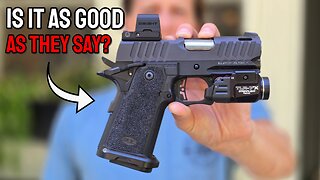 15:24
15:24
Tactical Advisor
17 hours agoBest 2011 of 2025 | Bul Armory Ultralight Pro
4.59K -
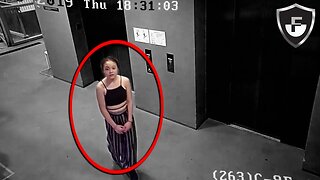 27:31
27:31
True Crime | Unsolved Cases | Mysterious Stories
2 days ago $0.03 earnedThe Hong Kong Schoolgirl Mystery – 5 Mysterious Unsolved Cases (Part 8)
5.38K1 -
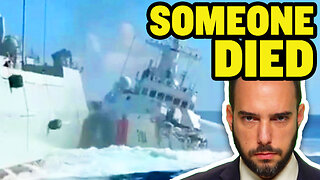 7:19
7:19
China Uncensored
23 hours agoChina is DONE in the South China Sea
6.67K17 -
 LIVE
LIVE
Joe Donuts Live
4 hours ago🟢 Loot Rats Unleashed: Arena Breakout Chaos! | Joe + Tony + Vlad
276 watching -
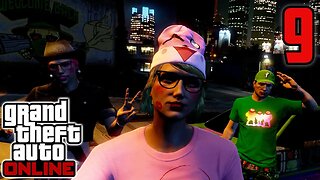 30:37
30:37
Degenerate Plays
15 hours agoThis College Is Out Of Control - GTA Online : Part 9
4.84K -
 16:28
16:28
Mrgunsngear
3 days ago $0.49 earnedBeretta 92XI SAO Sabbia Review - A Few Surprises
7.53K6 -
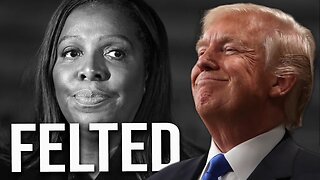 1:48
1:48
Memology 101
1 day ago $0.02 earnedThis aged like milk for Tish James...
3.36K7 -
 2:45:02
2:45:02
Boxin
3 hours agoGrounded! part 5
12.1K -
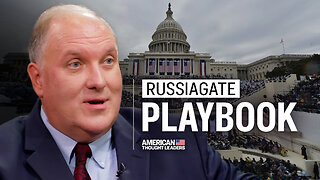 43:37
43:37
American Thought Leaders
18 hours agoAfter 9 Years of Investigation, Here’s What I Uncovered | John Solomon
5.21K7 -
 1:02:27
1:02:27
The Heidi St. John Podcast
2 days agoWhen Government Becomes God with Bill Jack
1.17K